Answered Questions
How Can I Support Social Skills During Difficult Times?
Why is Social Emotional Learning Important?
How Do I Stop My Child from Feeling Stress/Anger/Sadness/Anxiety?
Why Does My Child Seem So Different at Blue Bird?
Why Won’t My Child Follow My Directions?
Why Do They Behave That Way???
How Can I Get My Picky Eater to Eat?
How Can I Get My Child to Engage in Play?
Why Does My Child Have Such a Hard Time Falling Asleep at Night?
Why Does My Child Have Such a Difficult Time Accepting No?
How Can I Find A Support Group For Parents Of Children With Autism?
How Can I Find A Support Group For Parents Of Children With Autism?

Dear Birdie,
Where can I find/join a support group for parents of children with ASD?
Thanks!
A Parent
Dear Parent,
Your question about finding support and forming relationships with other parents and caregivers is an important one.
In addition, if you’d like to find other resources, here are some groups offering various support services and advocacy resources for parents and caregivers.
Asperger Autism Network Support Groups and Online Forums – The Asperger / Autism Network (AANE)
The Answer, Inc Support Services — The Answer Inc Autism Awareness & Support Agency Offers various support groups including parent groups, a group just for men caring for individuals with autism, and a 24/7 helpline.
North Suburban Parents of Kids with Special Needs North Suburban Parents of Kids with Special Needs | Facebook – Facebook group with online discussions and support services.
And please, let me know if you find more resources that are useful to you as a parent so we can share them back with other parents and families!
All the best,
Birdie
How Can I Support Social Skills During Difficult Times?
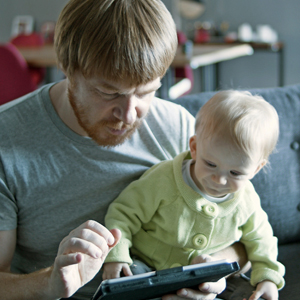
Dear Birdie,
My son is 3 and he has autism as well as some complicated health problems. This means that we’re trying to keep him healthy at home, avoiding public spaces, and spending less time than we used to with friends and family.
However, my son LOVES to be around other children. His favorite place is the neighborhood playground where he can sit in the sandbox, watch other kids play, and dig holes next to them. He also LOVES his cousins because they give him hugs, he likes to run around with them, and he enjoys when they tickle him. Obviously, these aren’t activities he can do very much right now.
He seems to be sadder than usual, is quieter, and sometimes cries but we don’t know why as he’s not very verbal yet. We think he’s missing time with friends and family. How can we help give him access to peers but keep him safe at the same time? We worry about his social and emotional health as much as his physical health but aren’t sure how to do that safely.
Thanks!
A Worried Dad
Hello Worried Dad,
First things first…You are not alone in this struggle. Most families are trying to figure out the best ways to keep everyone physically safe, maintain health and hygiene, while also staying emotionally balanced and mentally well. So many things that our children used to love are either closed, unsafe, or disrupted by our current health pandemic. It is a hard time for everyone so know that you’re not the only parent trying to sort out this situation.
It also sounds like you are very observant of your son’s needs and open to understanding his perspective. This is so important as we try to figure out how to best meet his needs.
Finally, it sounds like your child is utterly charming in his love of other children, cousins, and sensory play. It appears that he benefits by being around others through sensory play like sand, tickling, and hugs as well as the social aspect of being near peers.
Let’s think about how we can creatively provide him with both visual access to peers as well as sensory inputs that may mimic the play without opening up opportunities for sharing germs. Here are some questions to consider:
- How does your son respond to doing video calls with cousins and friends? Does he enjoy it? React to the video? Or does he treat it more passively like watching a movie?
- How does he react when you or your partner give him the sensory inputs he was getting from peers? How does he respond to your hugs? Tickles? Sand play at home?
- Could the video and sensory play be combined? What if you did a video chat with a friend or cousin while they both had a box of sand and some toys? Or it could be other sensory objects he likes such as dried beans, bird seeds, or soapy water.
- How might he respond if you give him squeezes, hugs, or tickles during the call to mimic what he’s used to? Could you also sing songs or do dances that involve clapping or stomping feet to engage other forms of sensory experiences? (If You’re Happy and You Know It; ABCs with claps or stomps; Animal Freeze Dance; One Little, Two Little, Three Little Pumpkins; etc.)
- Since your son is still developing verbal communication, it sounds like it might be helpful to have organized activities ready to engage him and his cousins or friends during the call. Could you all cook a meal while video chatting? Have dinner on video chat? Color or paint together? Could the older children read a story to your son? Do a puppet show? Have a dance party?
This is such a process to discover what works best for your son to maintain social engagement safely. It sounds like sensory focused activities that give his body positive sensations may support his ability to engage. Finding what satisfies him emotionally while maintaining his social bonds may take time but please don’t give up!
Some other activities to consider might be: Looking at photo albums or pictures online to remember friends and family and share stories about his time with them. Drawing or writing letters together to send to family and friends and hopefully they will send him something too. Consider making something sensory like gluing sand, packing peanuts, or noodles on paper. When they mail you back, show a photo of the person who wrote to you so he can connect the letter with the person visually.
Wishing you all the best as you keep finding ways to stay connected,
Birdie
Why is Social Emotional Learning Important?
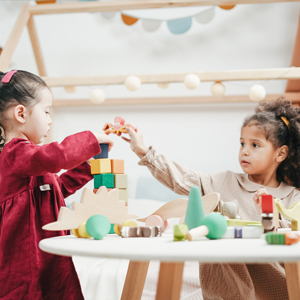
Dear Birdie,
I see that Blue Bird Day includes Social Emotional Learning within their therapeutic work. I’m wondering what that is, why it’s important, and how it helps my child develop. I’m mostly worried about their academic development as I want to make sure they’re ready for first grade and wonder if they have enough time in their day to include emotional topics too. Can you share any info about how this helps children achieve?
Thanks,
A Curious Mom
Hello Curious Mom!
This is such a great question! I’m so glad you asked. Social Emotional Learning is focused on building children’s foundations of emotional regulation like managing anger or sadness without having a meltdown, handling challenges while maintaining focus, and learning to build relationships with others. These skills are important throughout our lives but are particularly necessary when learning new skills.
When a child learns a new skill, like writing her name, she may feel challenged or overwhelmed by learning how to control the pencil or make the marks she wants. Trying new things can be exciting, frustrating, scary, or overwhelming and if a child doesn’t know how to manage those feelings, they may display challenging behaviors such as screaming, running around, or throwing the pencil and paper. These emotion-based behaviors can challenge a child’s learning as they need support to calm themselves and refocus on the activity. However, when a child has a foundation of emotional and social skills, they may feel more confident, prepared, and ready to try a new academic skill.
Similarly, social skills are very important to support learning new skills. If a child is working in a small group to play a letter matching game but struggles to wait their turn or share the game pieces, they may react negatively by grabbing pieces from others, pushing peers away, or running away from the game. These behaviors can limit the child’s ability to engage in a learning activity. Social skills like asking to play with others, offering to trade or share a toy, waiting in line, and collaborating with peers will support a child’s learning throughout their lives while also encouraging healthy relationships.
While it may sound like an extracurricular activity, Social Emotional Learning is the foundation of all types of learning. When we develop ways to manage our emotions, can focus our attention on a challenging activity, and can work well with others, we can achieve academic skills like reading, writing, and understanding challenging concepts.
Thanks for your thought-provoking question,
Birdie
How Do I Stop My Child from Feeling Stress/Anger/Sadness/Anxiety?

Dear Birdie,
I have two children. My 9-year-old son is fairly calm and can verbally express himself through most feelings but is rarely angry. My 4-year-old daughter, on the other hand, is frequently mad, sad, and worried. She expresses these feelings by crying out, throwing herself on the floor, or demanding to be held even when I’m obviously busy or unavailable. Unfortunately, her emotional responses have only gotten more intense in the last 6 months and I suspect are part of the pandemic.
How do I stop her from having such big emotions? I tend to be more like my son, am pretty relaxed, and rarely feel emotions as dramatically as my daughter does. How do I stop all these dramatic feelings??
Thanks,
Stressed Anxious Dad
Hey there SAD,
It sounds like you have some great observational skills and have reflected on the personality differences in your children. It’s so important to recognize how you as a parent are similar or different from each of your children as individuals. Obviously, this can impact how we parent a child, how we demonstrate favoritism in sometimes subtle ways, and how we respond to their emotions particularly when they are so different from our own reactions. It can be tempting to think that something is wrong with someone when our responses and emotions are so different.
In this situation, my first piece of advice would be to try and reframe how we think about this problem. To be honest, it is next to impossible to change or control how another person feels. Think about the last time you felt distressed, upset, or overwhelmed and someone told you “Don’t worry. It’ll get better soon.” Did that help you feel better? For most people, that can feel like the other person doesn’t understand our emotions and may even be diminishing them.
So, as we think about your daughter’s emotional reactions, we need to hold them in as neutral and observational stance as we possibly can. Her feelings are neither good nor bad, they cannot be changed just because you feel differently. But, by helping her to feel understood and supported, you may be able to help her learn to respond and react to her emotions differently.
When others tell me how I should feel, my tendency, as an emotional bird, is to go deeper into that feeling. But when someone lets me know that they see how I am feeling, they understand and respect it, I’m more likely to try and think through my emotion and find a calmer solution to it.
Thinking about your daughter’s situation, I am wondering a few things and maybe these questions can support you to think about different ways to help her:
- Does she have words to describe and understand how she feels? If not, using books, singing songs, and using mirrors to look at your body while talking about your internal sensations during different feelings can help. It’s best to use these tools when everyone is calm as it’s easier for the brain to process and reflect on new ideas.
- Can she communicate her emotions before she has a big reaction? If not, it may help her if you step in before she melts down to help her identify her feeling. “Honey, it looks like you are mad right now. Your hands are in fists, you are frowning, and it looks like you want to throw that toy. Is that how you’re feeling?” If you can catch her before she is emotionally dysregulated, she may be able to slow down, think through her feeling, and find another way to express it.
- Finally, does your daughter know why she is having this emotion? During a calm moment, it may help her to think that through with you using common experiences. “Honey, I have noticed that you get really angry when your brother won’t let you take away his toy. That’s a problem. Let’s think through a solution together.” Having her think through a solution during a calm moment means she’s more likely to implement it. The next time that situation arises, you can gently remind her of the plan you developed, and it may detour her to have a calmer reaction to her feelings.
SAD, I don’t have an emotional magic wand to make your daughter only have specific feelings. Human beings have so many emotions and it can be hard to manage them all as a parent. But, by helping her learn to handle her emotions in positive, healthy, and appropriate ways, you are helping her to experience her emotions without letting them control her. That’s important no matter the feeling you are experiencing and no matter your personality.
Let us know how it goes.
Best,
Birdie
Why Does My Child Seem So Different at Blue Bird?
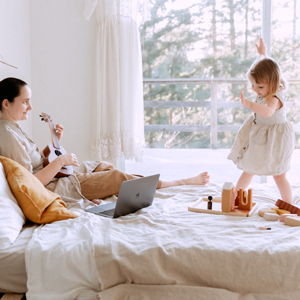
Dear Birdie,
My son has been attending Blue Bird for almost a year now, he is almost 4 and loves to go to “school” every day. He particularly likes to sing, dance, and do art. When his reports come home each day, it sounds like he is engaged, focused, and participating.
However, when he’s at home, he wanders, doesn’t want to engage in activities, and will only focus when the television or a tablet are on. We don’t want to use those to keep him calm and focused, but he also can easily have tantrums or get upset at home and we don’t always know why. He doesn’t seem to have those problems as often at Blue Bird.
Why is my son so different at Blue Bird? How can we help him to have that same calm and focused energy at home?
Thanks so much,
Hiding Electronics is a Little Pathetic
Hello HELP,
You are asking such an important and common question. We often hear that children behave differently at home than they do at the clinic and parents want to use our “magic wand” to make it happen at home too. Unfortunately, we don’t have any magical wands, potions, or spells. To be honest, we sometimes hear the reverse too, that a child is calmer, more focused, or more engaged at home and parents wonder why we don’t see that side of them at Blue Bird. We’d love the parents’ magic wand too!
However, if you think about it from our own experiences, aren’t we all a little bit different depending on the environment, the people we’re around, or the time of the day? Think about how you carry yourself when you’re at work, meeting with your supervisor. You might say or do things differently than how you talk with your friends on the weekend while engaging in a favorite hobby. Similarly, our children are learning that there are different expectations, rules, and behaviors at Blue Bird than at home.
In addition, our environments may be very different. At Blue Bird, there are different types of toys and resources like swings, monkey bars, and art supplies that they may not have access to at home. These materials support sensory integration, learning specific skills, and may bring out focus that you may not see as much of at home. In addition, at Blue Bird children don’t have access to televisions and tablets are used to communicate, but not to play on. Finally, children are in small groups at Blue Bird where they interact with peers. Most children may only have a few siblings at home that are older or younger than themselves. All these differences impact the types of engagement, behavior, and interactions that you may see at home versus at Blue Bird.
So, what can we do to support the focused play and engagement that you’d like more of? Let’s start with where your son is at, what he likes at Blue Bird, and how we can apply that at home and expand on it:
- Use activities your child likes to support their attention. Singing, dancing, and art are all great for encouraging creativity, brain development, gross motor skills, and social skills. If you know your song’s favorite song or dance, let’s start with that! Sing it as a family, dance together, and encourage your son to sing it again. Then ask him to pick a second song. As he engages in choosing, he will feel ownership and be more likely to continue to participate. Other ways to support longer focus on songs and dance are: take turns choosing a song, he can pick, you can pick, a sibling, etc. depending on his ability to wait turns. Use puppets or stuffed animals to sing and dance along. If his favorite stuffed animal is excited to participate, he may too. Using silly songs that incorporate people he knows and loves will also encourage more engagement. “Willoughby Wallaby Woo” and “The Name Game Song” are great examples of this. Or try singing his favorite song with different voices: think monster, baby, grandpa, quiet, or loud.
- As you see your son focus on a song or dance, you can then add a less preferred activity like reading a book or playing with a toy. Connecting it to the theme of the song/dance may increase the likelihood of participation. If he likes to sing Old MacDonald, why not offer a barn with animal figures to play with? Or read a story with animals in it. If he likes singing Five Little Ducks, maybe it’s time to count duck pictures or other animal toys. You can line up the toys and sing the song while you count them.
- When your son becomes more comfortable trying new activities, you can reserve his favorite dance, art, or song for later. Think about using the “First…then….” approach. As in, “First we’re going to build a house for your animals with our blocks. Then we can sing Old MacDonald with them!” Moving a preferred activity back a few minutes can motivate your son to try something new while earning the chance to do a favorite activity.
- Think about brain breaks. These are therapeutic activities that support a child’s movement, give them a break from a challenging or strenuous activity, while engaging their thinking in a different way. Movement activities that encourage children to move their limbs can be really useful. Think about Head Shoulders Knees and Toes, doing a Freeze dance, or an active chore around the house like pushing a basket of laundry, or helping to carry a small box or garbage bag. Taking a brain break supports their brain development, can remove some of the power struggles around engaging in activities, and gives you both some time to have fun together.
- Finally, let’s think about ways to use screen time as a motivator and a family connector. If your child is shutting you out when a screen is on, it’s a sign that they may be having too much time or needing more adult support when they use it. So, let’s make it another tool. Can your son “earn” tablet time using the “First…then…” approach? “First, we’ll finish cleaning up/reading stories/running errands, and then we can watch Mr. Rogers together.” If you’re going to use screen time, I encourage parents to watch tv or play a tablet game with their child as a way of maintaining connection, observing how they’re using the technology, and maintaining communication during the game. Asking them a question about the game, having your child “teach” you to play the game, or verbalizing something you’re seeing on the show are all ways to use technology to support your relationship while making it a useful tool. There are online turn taking games like memory or connect four that also support using the technology together. In reality, the screen can be a helpful “babysitter” when you need to cook dinner, go to the bathroom, or just have a few minutes of quiet. That’s understandable but I encourage you to limit your child’s access to educational games or shows like on PBS and to only use it for short amounts of time – 15-20 minutes of alone screen time a day, maximum. If your child uses screens alone, for longer periods of time, you risk having a meltdown when you try to shut them off or re-engage your child. Research also shows that extended use of screen time for children can negatively impact their attention, language, weight, and sleep patterns. Again, this can be a tool for connection, to earn after doing a less preferred activity, and to support learning of specific concepts.
RESOURCES:
Public Broadcasting Services, Info For Grown Ups
American Academy of Pediatrics, Research on impact of media and technology
For art, dramatic play, and sensory activities, check out Blue Bird’s website
Why Won’t My Child Follow My Directions?

Dear Birdie,
My daughter is 5, bright, loves to read, and likes to play with her friends. But she also hates listening to me, her dad, or any adults at home. When we give her a direction like cleaning up her toys or washing her hands for dinner, she simply walks away, ignores us, or starts to scream in response. It’s frustrating and exhausting. We’ve tried everything from counting to three to giving her time outs in her room. But she ignores those or seems to enjoy playing in her room by herself more than the alternatives. What are your suggestions? Do we need to punish her more? Take away her toys?
Tired Out Mom
Hello TOM,
This is a common scenario that many families face. How do we support our child’s ability to follow directions without constant punishment/yelling/threats/power struggles?! Unfortunately, there is no easy solution that will suit every family’s needs. What I would propose would be to do some investigating and thinking about what is behind your daughter’s behavior. What purpose does it serve? How come this is her reaction to simple instructions? Behaviors serve a purpose for people, the reason isn’t always obvious to us parents but, it’s giving your daughter something, so we need to figure out what that is.
- When does she behave this way? Is it first thing in the morning when she’s waking up? After a long day? Could this be how she reacts to feeling tired? If so, we can help her think about ways to handle that feeling that are appropriate. Can she verbalize how she’s feeling? If not, we may need to help her identify that. “Honey, it looks like you’re tired. You are moving slower, your eyes are closing. Let’s finish cleaning up quickly so we can get you ready for nap/bedtime.”
- Does this happen when she’s given more than one instruction? How does she respond to just one instruction at a time? Sometimes children get flooded or overwhelmed by instructions. Perhaps doing one at a time, waiting for her to complete it, giving positive reinforcement like a high five or a smile, and then giving the next instruction may help her remain focused. If your child is seeking a reaction or attention through her negative behaviors, you can prevent that by noticing her for positive behaviors and supporting that positive sense of herself.
- In terms of punishment, using a negative reinforcer rarely gives us a positive behavior or it may do so for a short time. However, if we look at the situation from the standpoint of natural and logical consequences, this may reinforce the behavior you’re looking for. For instance, if dinner is a meal she really likes but she’s refusing to wash her hands, the natural and logical consequence is “You can eat when your hands are clean”. Or you can take a step back and focus on “First…then…” approach of “First you need to wash your hands and then you can have dinner.” Using a positive motivator may support her ability to follow directions.
By remaining focused on observing your child to understand the meaning of the behavior, staying calm and matter of fact, and using natural and logical consequences, you should see some change in her behaviors. In addition, by avoiding becoming angry, staying calm, and authoritative in your approach you are modeling that you won’t participate in a power struggle.
All the Best,
Birdie
Why Do They Behave That Way???

Dear Birdie,
I am a mom of twins, one boy and one girl, who are 3 years old. They love to play, explore new places, and dance to their favorite music. However, it can be very stressful when we leave the house as they never want to stop playing, struggle to focus on getting their shoes on, and when we’re in public they can fight or have tantrums when they don’t get their way. Basically, it’s exhausting, and I don’t enjoy any of it with them. I know they need to go for walks, explore the neighborhood, and spend time outside but it’s just so stressful! Birdie why do my children behave this way?!
Maxed Out Mother
Dear MOM,
What you describe is the simultaneous joy and challenge of twins. It sounds like they are very good at entertaining one another – perhaps a little too good at it! While most parents can understand the challenges of getting young children out of the house or through a shopping trip without a meltdown, it’s exponentially harder with twins or multiples. It’s almost like their energy builds off of one another’s.
Some things to consider about your children:
- How verbal are they? How well do they understand simple instructions like “get your shoes”? How well can they communicate what they want or how they are feeling? Sometimes, when we’re still developing language abilities, our behavior is what communicates our thoughts. If your children are still developing their language skills, I would recommend using visual instructions. For example, putting up a chart near the front door that has visuals of each step that you expect. Shoes, Jacket, Hat, Backpack, etc. Keep it simple, no more than 2-4 steps, and keep it visual. Similarly, with verbal instructions, keep it to one step at a time.
- How ready are they to take on a “helper” role at home? Can they help you put out silverware on the table for dinner, throw out a piece of paper in the garbage, or put something small in the refrigerator? If they can help with these tasks, I am wondering if having “jobs” for them when you’re out and about could help. For instance, “Jill, when we go to the store, I need your help to find the apples. Jack, in the store, I need you to help me find the tomatoes.” These important and visual jobs can help focus their attention. When they accomplish that first job, move on to the next. “I need you to help me find the bread, crackers, meat, etc.” Keep it to one item at a time, give each one a different job, and think of them as your extra set of eyes. If visuals help, cut out pictures from the weekly grocery ads and tape them to note cards. Give each child one at a time to look for. Holding this will keep their hands, eyes, and brains occupied. In terms of getting out of the house, they can also be helpers that carry out small things. Framing it “I need you to carry the umbrella/lunch bag/small box…” makes them important and can also encourage them to get ready and focus.
- Have them earn privileges. Little things to us can be big things to them. If they love music, encourage them to get ready quickly by letting them know that the first person ready to get in the car can choose the music (within reason, you may not be ready to have them listen to Norwegian Death Metal at 8am on a Tuesday). In addition, when they are behaving well in the store, even if it’s just the first 2 minutes, give them a high five or hug. Notice when they are behaving how you’d like them to and point it out. More than just “good job” let them know that “It’s so helpful when you sit in the cart/follow my directions/share a toy with your sibling” so that they can obtain positive attention, learn what you expect, and can repeat those behaviors in the future.
- Are your goals the right size? If you’re expecting both children to be well-behaved during a two-hour trip to Target, you may be asking too much. Can it be broken up into smaller goals? For instance, can you give them praise for helping you in the grocery section? The home goods section? Etc. Can you notice how well they walked by the toy section calmly and quietly, without having a meltdown (I know, we can all dream.)? Can you take them on shorter trips to help build their success? Or can you take one at a time on an errand, so they are less distracted?
- Motivators. This is a big topic for most families. What do we use to motivate the behaviors we’d like to see? And how can we help support children to be internally motivated, to WANT to behave appropriately rather than to seek rewards for everything they do? Using a combination of motivators, some verbal, some visual, and some physical and mixing it up can support this. For instance, praising their behaviors verbally or through a hug, handshake, or high five. Commenting on what they’re doing “I see you are getting ready to go. Your shoes are on and you are waiting patiently for me. Well done.” In addition, being careful of how food is used as a motivator can avoid making certain foods “special” (aka candy) while labeling other foods as “yuck” (aka fruit and veggies). Letting them know that you won’t be buying any candy in the store but they can work for a special snack you have waiting in the car is one way you can support positive behaviors with a simple reward like an apple, cheese stick, or baby carrots. In addition, you can use positive and natural consequences. “Let’s get ready fast. Then we can have more time playing outside/reading stories/going for a walk.” Finally, you can comment on their reaction to their own behaviors. “You helped put away the paper towels. Thank you! You look so proud of your hard work.” Connecting their behaviors to their internal emotions is a great way to help them internalize their own feelings of accomplishment. This reinforces their notions of themselves as helpful, caring, and positive people.
- Sibling rivalries/getting their way. This is a universal issue that most siblings and families deal with. How do you balance competing desires of the children? One wants the honey nut cereal, the other wants the rainbow unicorn sugar bombs. And then there’s a fight. This is a skill that children need time to learn and practicing at home and in school can help them prepare for the wider world. Try engaging them in turn taking games. It could be as simple as building with blocks and each person gets a turn. They may be upset when brother wants to put up a big blue piece, but sister didn’t want that one. They can practice on low-stakes activities like this to learn how to compromise, take turns, and understand that other people have different ideas. When you’re preparing a meal, one can help choose what veggies go in the salad and the other chooses what salad dressing to put on the table. If they start to get ornery about not having a turn, you can remind them that their turn is coming, and they will get to decide X or Y later. It’s also a chance to notice and praise their ability to wait. When you’re in public and you think they might have a disagreement, try to prevent it. Mention that “We’re about to go pay for our groceries. I know there’s lots of yummy candy by the check out but, remember, we’re not going to get any candy today. If you can help me put the food on the check out, we can have our surprise snack in the car.” This is a way to set a clear limit, give them an important job, and focus on what they can have or do.
Meanwhile, don’t hesitate to give them praise when you get home from a successful trip and enjoy those dance parties!
All the best to you and your twins,
Birdie
How can I get my picky eater to eat?
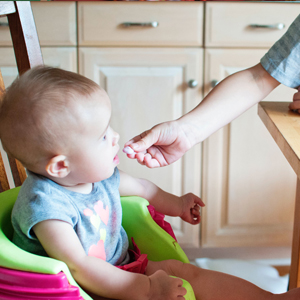
Dear Birdie,
Around dinnertime is the hardest time for my family. My child is 4 years old with a diagnosis of Autism, and I believe the world’s pickiest eater. Meals are a disaster and so stressful. My son will only eat chocolate chip cookies and drink soda. I try to get him to eat what my family eats each night, but he refuses – screams, cries, hits, throws, you name it. I worry for his nutrition, and ability to successfully have a good experience surrounding meal times in the future – lunch rooms, restaurants, etc. Any advice?
Sincerely,
Mom Of Picky Eater
Hi MOPE,
This is a situation we often get, and I mean often, with our parents. Our kiddos can be notorious for making us feel like bad cooks – but rest assured, it isn’t your cooking! Children with Autism are much more likely to be picky or troubled eaters than kids without. The issue isn’t so much that they don’t “like” the food, but their body truly cannot tolerate it! In many cases, this stems from experiences in early childhood. Say your child, at a much earlier age, is exposed to a food they’ve never had before, say grapes. When they eat the grapes, suddenly they feel terrible (e.g., upset stomach, too much sensation in their mouth, an intense texture they weren’t expecting, or reflux). That experience becomes ingrained in their head (I.e., Grapes = bad). Repeated experiences such as these with various foods (or even a few foods that may resemble the “scary” grapes!) can derail their acceptance of foods in the future. Whether or not that food would still elicit such a response today, your child has changed his viewpoint on what food can do to his body.
How do we help this? At Blue Bird, we take the feeding approach called SOS, or Sequential Oral Sensory. This approach progresses food tolerance, exploration, and ultimately consumption step-by-step in a fun, play-based, and low-pressure way. In a nutshell, we want our kiddos to be able to tolerate the sight and smell of their food within their space, then slowly progress to touching, smelling, licking, biting, and ultimately eating the food. The best way to do this – play! Use the target foods in a fun and interesting way, with little to no pressure (the days of “eat this and then you can have a dessert” are in the past). Be a model, put the same food you are giving to your child in front of you, and play! This could be creating “kabobs” with the food on a stick, making “snowmen” with the food on your plate, putting the food between your teeth and pretending to be vampires, making dinosaur teeth marks in the food – keep it light, simple, and motivating! Notice, all of these examples, there was no mention of asking your child to “eat this.” If we can reduce the “scary” of these foods, the consumption will come with time!
Now that we know how to play with our food (while that might seem counterintuitive to creating appropriate mealtime habits) what foods do I try first? At BBD, we also utilize a system called food chaining. Food chaining is expanding a food repertoire, changing minimally the characteristics of the foods that ARE tolerated. In your case, you’ve got a kiddo that will only eat chocolate chip cookies. While these are tasty, easily accessible, and fun to make, this leaves little to the nutrition that your child needs to grow and develop. By changing only one or few characteristic(s) at a time (e.g., color, size, shape, temperature), your son is more likely to accept the target food you are presenting. If your child only wants chocolate chip cookies, let’s try a chocolate chip granola bar. This food has a lot of the same taste as a cookie, but it only changes the shape. Use the SOS approach above to master that food. Next, progress to granola (change in shape), and if possible, add plain yogurt (change in texture). Next, use blueberry yogurt with the granola, and last, target blueberries. In this chain, we progressed from chocolate chip cookies, nutrient poor, to blueberries, nutrient rich!
Want to kick the soda? Use the same idea! Rather than the sugary drink, opt for a sparkling flavored water (e.g., La Croix, Bubly). It may be that your child likes the sensation of the fizz in his mouth, which this chain would suffice! Have your child play with the new beverage by adding food coloring. This may allow the liquid to match in color to the preferred soda, therefore only changing one characteristic (flavor).
Be mindful MOPE, that this takes time, patience, and creativity! Picky eaters don’t become food connoisseurs overnight. Your child’s speech language pathologist or occupational therapist is well versed in these treatment approaches, and would be happy to share all of the wonderful visuals, tools, tips, and tricks we use in clinic each day to treat children similar to yours!
All the best,
Birdie
How can I get my child to engage in play?
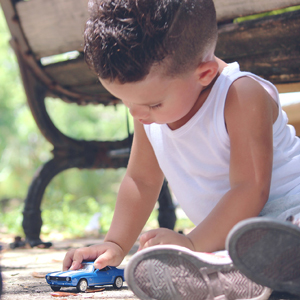
Dear Birdie,
I am a mother of two boys, age 4 and 5. My 4-year-old is nonverbal and diagnosed with Autism. He rejects most toys, or moves away when I try to introduce them. He has a favorite bus toy that he will play with and drive around, but starts to have meltdowns when I come close with a different toy that isn’t preferred. I worry about how to expand his play skills, sharing, and encouraging new ideas. What do you think I should do?
A Mom Ready to Play
Hello Mom who’s ready to play!
Thanks for asking this great question. One of the first stages of play is what we call onlooker play, or learning by watching. Children learn and create mental representations through watching others. What I would initially suggest, is bringing another bus into the room for yourself. Imitate your son’s actions with the bus and get him comfortable with you playing next to him with the same item. Next, I would suggest finding some people or objects that he likes, or watches on TV. These toys/figures may be ones you already have or may be new to him, and either is okay. Start creating a small play scheme in proximity to your son, so he can observe. Maybe you line up the characters in a line and the bus is picking everyone up for a field trip! Model the play scheme with your bus, the characters, and your language using short and simple phrase such as “Elmo goes in!”, “Time to drive!” etc. It is important to give our children time to take in information before having them produce.
The next stage of play is called parallel play, which is the ability for each person to work side by side doing his/her own thing. Using the same play scheme with the bus, gradually move some of the characters closer to your son so he has the opportunity to add them to his bus. You could also bring in your older son as a peer model! With this you can coach your oldest son on the play scheme you’ve created, and have him execute. After your son starts accepting the new play scheme, maybe you tweak it a little–Where instead, the characters are riding in a train or on an airplane—starting to expand his play little by little.
With a new play scheme set in place, this should help lead to sharing during play. Let’s keep in mind that children need to trade before they share! This means that when your son trades a character, or the bus for the airplane, he is not left empty handed. This step will eventually pave the path to sharing, where a child has to wait and lose the control of the object for a period of time.
Play is a time for fun where children learn so much! Keep modeling different play schemes and working with your oldest as a peer model. Excited to hear which toys and play ideas become his new favorites.
All the best,
Birdie
Why does my child have such a hard time falling asleep at night?

Dear Birdie,
My 3-year-old is having such a hard time falling asleep at night! We put him to bed, but hear him up for another hour or two. He’s so tired when we have to wake him up for school in the mornings since he didn’t fall asleep right away. What can we do to help him wind down in the evenings?
Thanks,
Mom of Night Owl
Dear Mom of Night Owl,
You are not alone! There are so many parents out there who are working through the same difficult situation. The biggest thing to remember is forming and keeping a consistent bedtime routine. This means completing the same steps starting at the same time every day in order to ready your child’s body and mind for sleep. There should be no screen time 2-3 hours before the bedtime routine begins, food should be limited 2 hours beforehand, and drinks 30 minutes beforehand.
An example sleep routine would be: cleanup, bath, pajamas, brush teeth, potty, story time, hugs and kisses, lights off. By cleaning up toys and activities, this signals your child that play time and day time are done. During the bath, you can use slow and consistent movements when washing/bathing, products with calming scents, and a warm towel to dry them off. Story time can be read with a calm, lower volume, and slower paced voice while cuddling for extra pressure input. Hugs and kisses for good night can even include rubbing their back, giving deep pressure squeezes up and down their arms and legs, big bear hugs, and slow deep breathing together. You can also modify the environment by exploring lycra sheets, weighted blankets, big body pillows, calming scents, black out curtains, sound machine, preferred comfort blankies/lovies, and soft pajamas.
Check out this Blue Bird infograph on sleep.
Here are some good tips from the American Occupational Therapy Association.
All the Best,
Birdie
Why does my child have such a difficult time accepting no?

Dear Birdie,
My son is 6 years old with autism and has such a difficult time accepting “no” and typically has a tantrum each time he is told “no”. We will be walking around the grocery store and he will ask for some treats and if I say “no” he’ll throw himself to the ground and begin screaming, so of course to get him to stop screaming in the middle of the store I have to say “yes”! How can I help my child learn to accept “no” and stop having such horrible tantrums whenever he hears it?
Thanks,
Tired Anxious Mom
Hi TAM,
Learning to accept “no” is a very challenging lesson for every child! The reason why children have a difficult time accepting no is partly due to them experimenting to figure out what they can get away with. A child that screams and flops to the floor when told “no” has learned that by engaging in these behaviors they typically get their way at the end of it. When children observe that you only sometimes implement the rules and follow-through with the “no”, they are likely to keep testing and/or engage in challenging behaviors. One of the most important things you can do as a parent is to be consistent! This means that when you say “no”, mean it. Therefore, as time progresses when the child is denied access it will become easier for them because they will understand that you can’t be swayed. When kids think that you only sometimes implement the rules, they are likely to keep testing you.
Now when you first start implementing consistency with stating “no”, expect an increase in some challenging behaviors. In ABA, we call this an extinction burst. This involves the elimination of a behavior by refusing to reinforce it. When a child engages in a tantrum, typically parents react to tantrums by giving the child attention. Even if you are disciplining the child it can be a form of attention. When the parent reacts, it may be reinforcing the tantrum and increases the frequency of it occurring again in the future. I recommend working with your child on accepting “no” while at home and with small things at first that don’t typically evoke tantrums or other challenging behaviors. For example, try denying access while coloring together and have them wait for a certain color (i.e., “I am using blue right now, please wait”). Then you can work your way up to denied access to things that are much more preferred, like in your instance treats at the store.
Here are a few suggestions that I have for your specific situation where you are seeing tantrums at the grocery store due to denied access to a preferred item:
I would recommend you have your child be involved in making the shopping list prior to leaving for the store, that way they have an understanding of what they need to buy while at the store.
Another suggestion is, if at all possible, avoid that aisle where the treats are. Keep your child busy while at the store and if they are capable of assisting with finding the specific items on the grocery list use them to help! Make grocery shopping fun and exciting, like going on a scavenger hunt, so their minds do not wander to the treats down the aisle.
My last suggestion is to implement rules while grocery shopping, for example we only buy what is on the list, we keep a safe body while walking in the aisles, and we use our listening ears with mom/dad. Explain these rules to them prior to leaving your home and review them again before entering the store. Inform them that if they are able to follow the rules while grocery shopping, they will receive _____ (insert a highly preferred item, like iPad or favorite toy).
Sincerely,
Birdie
